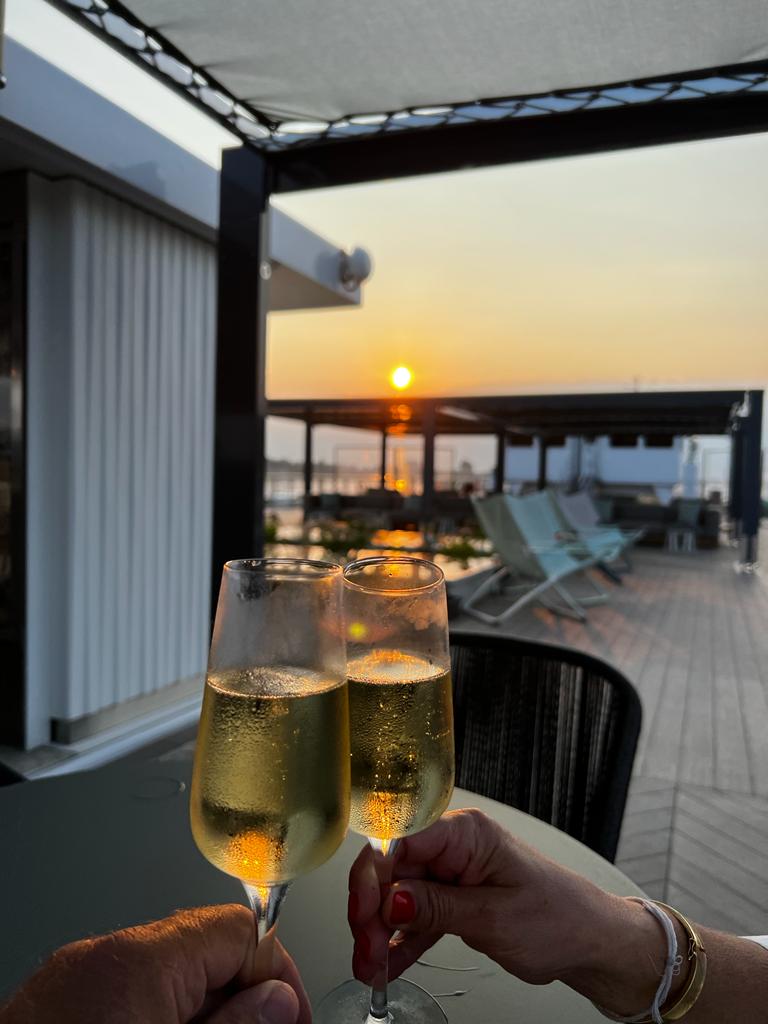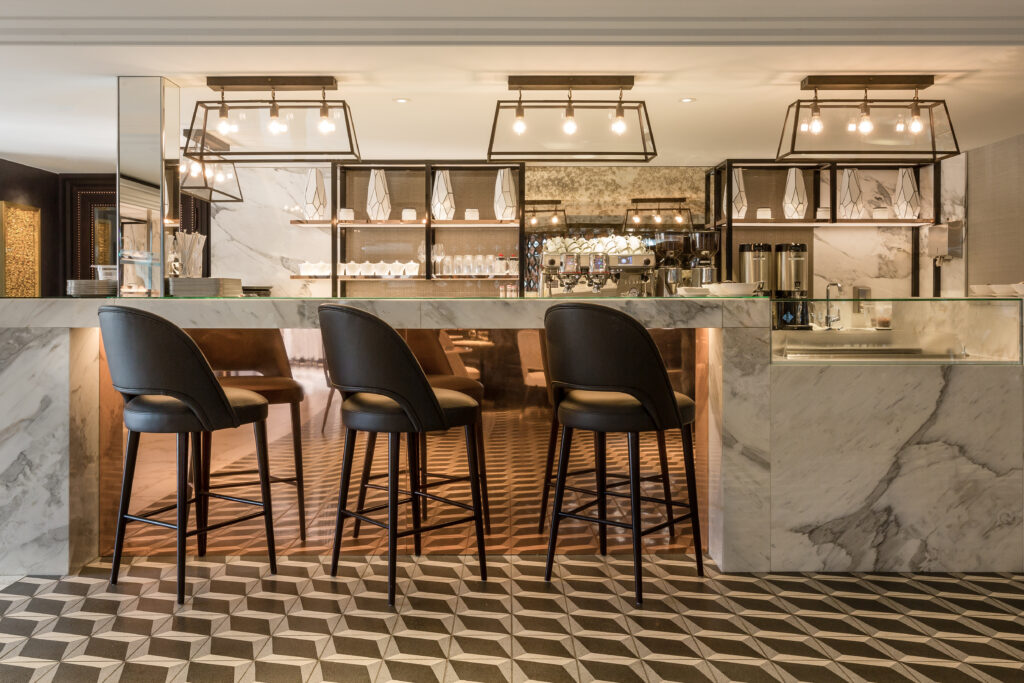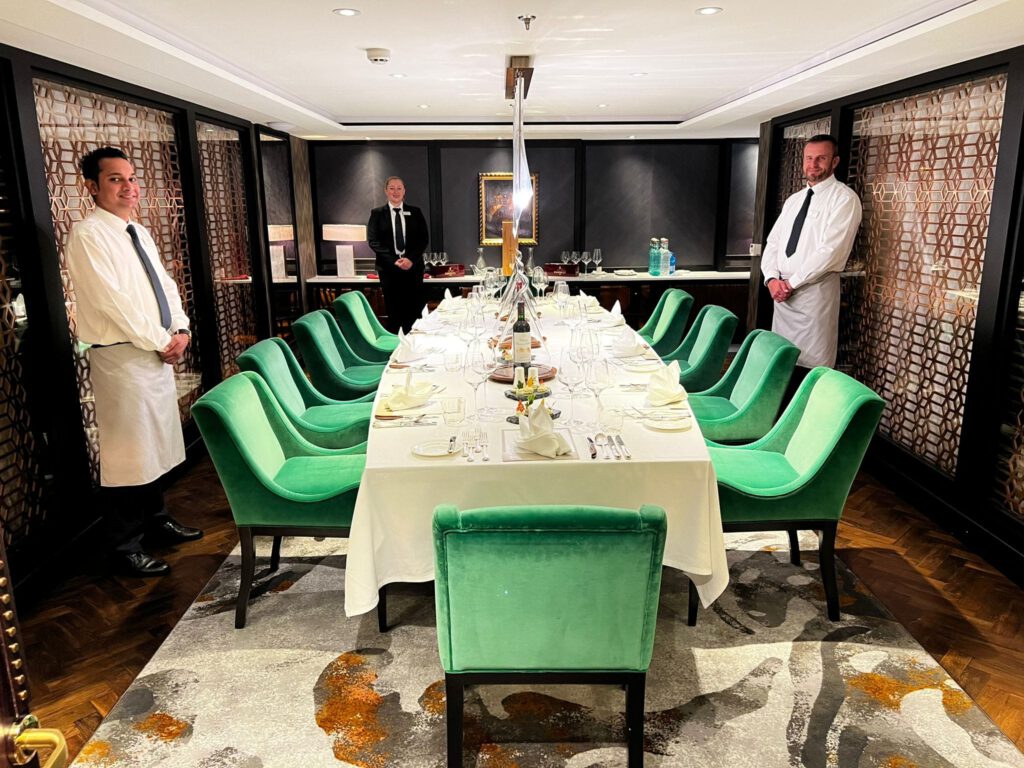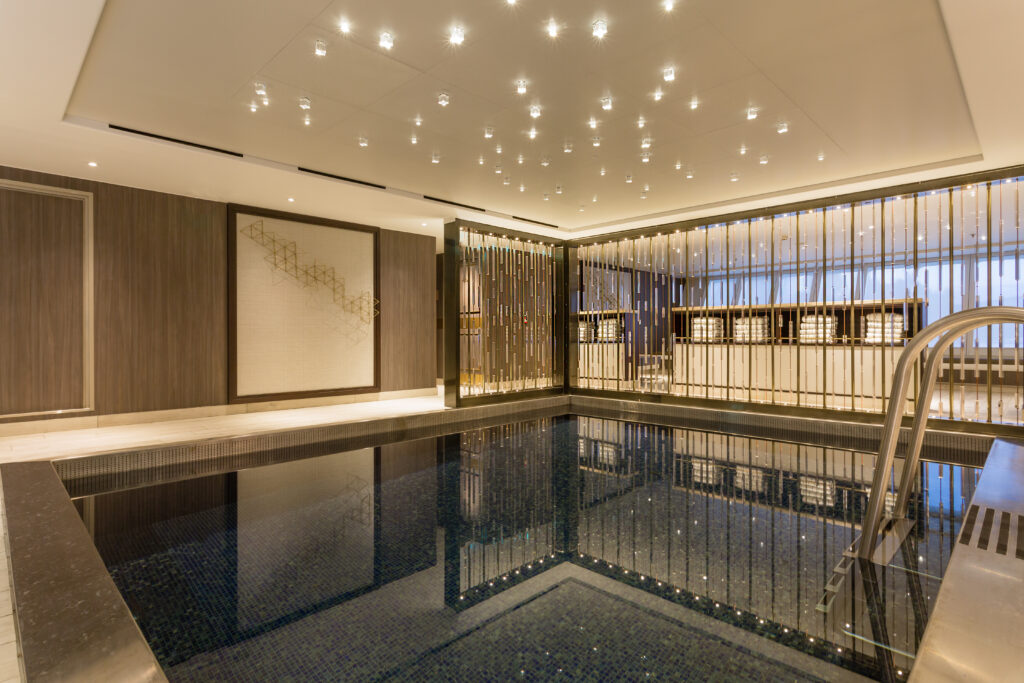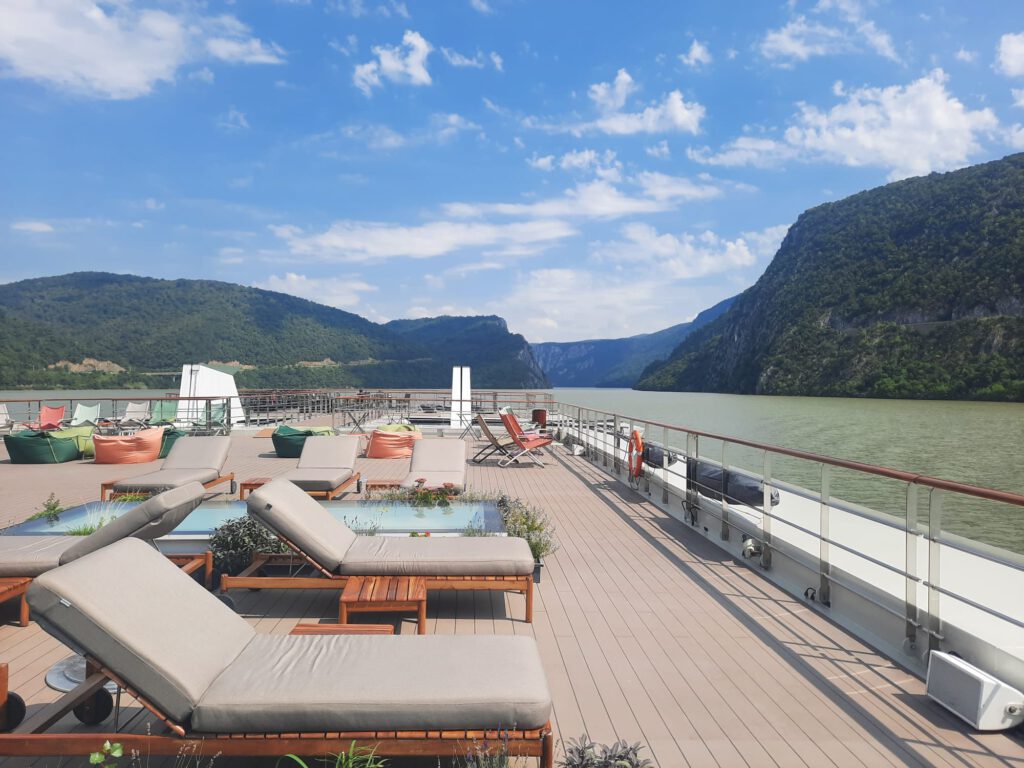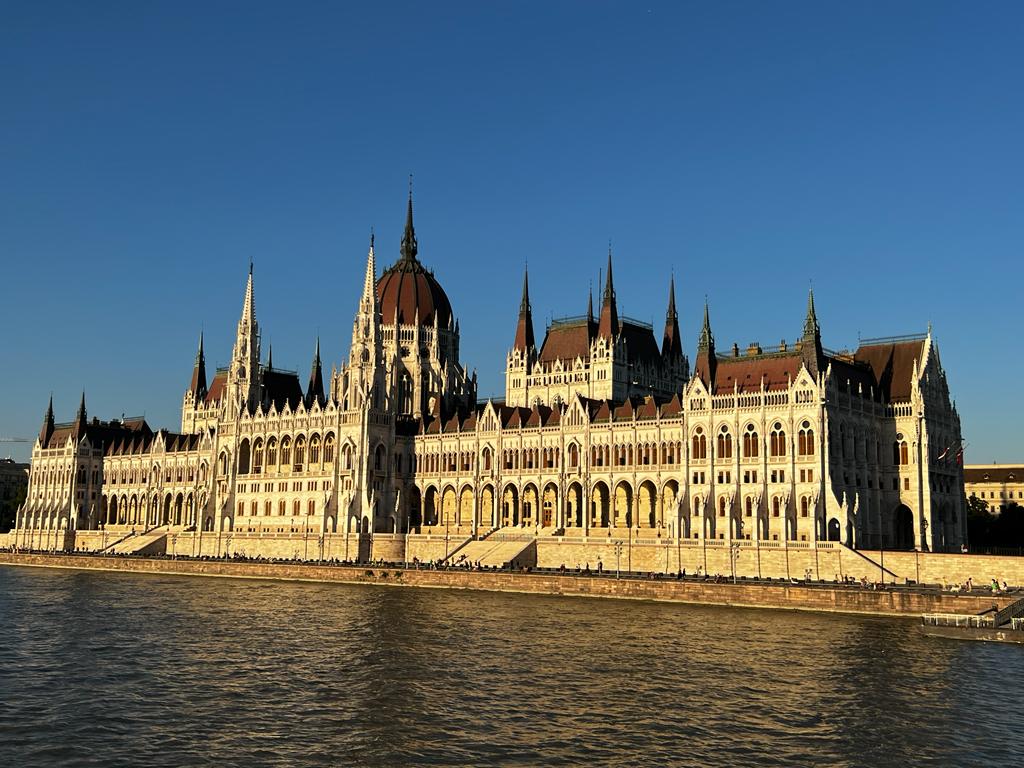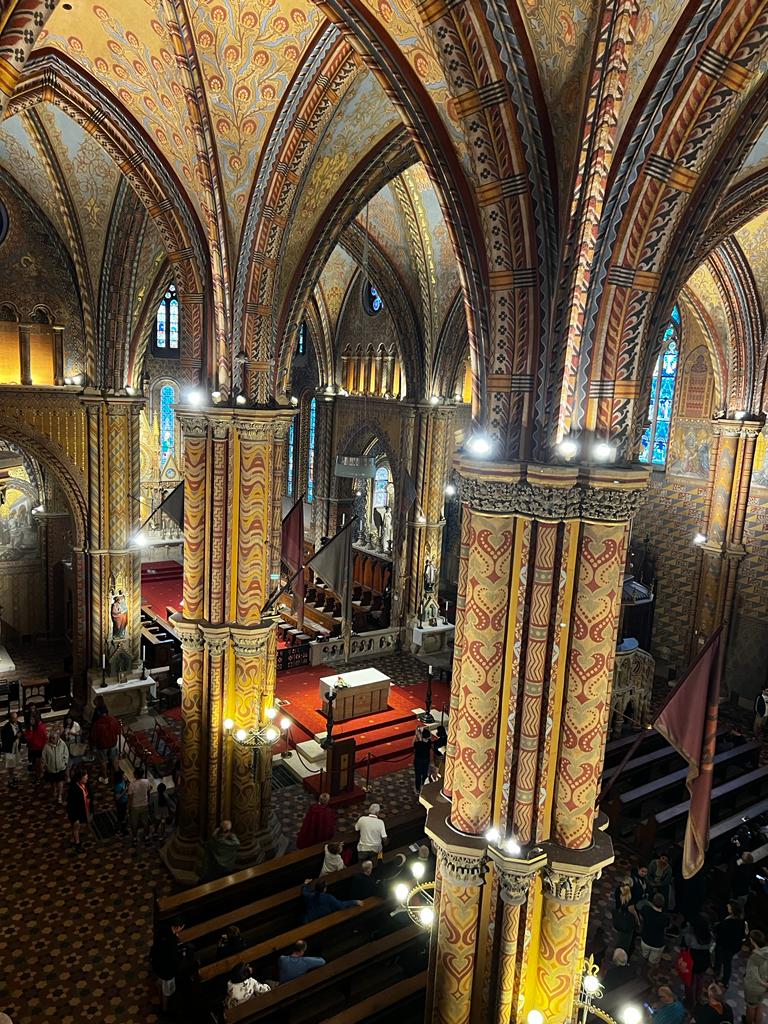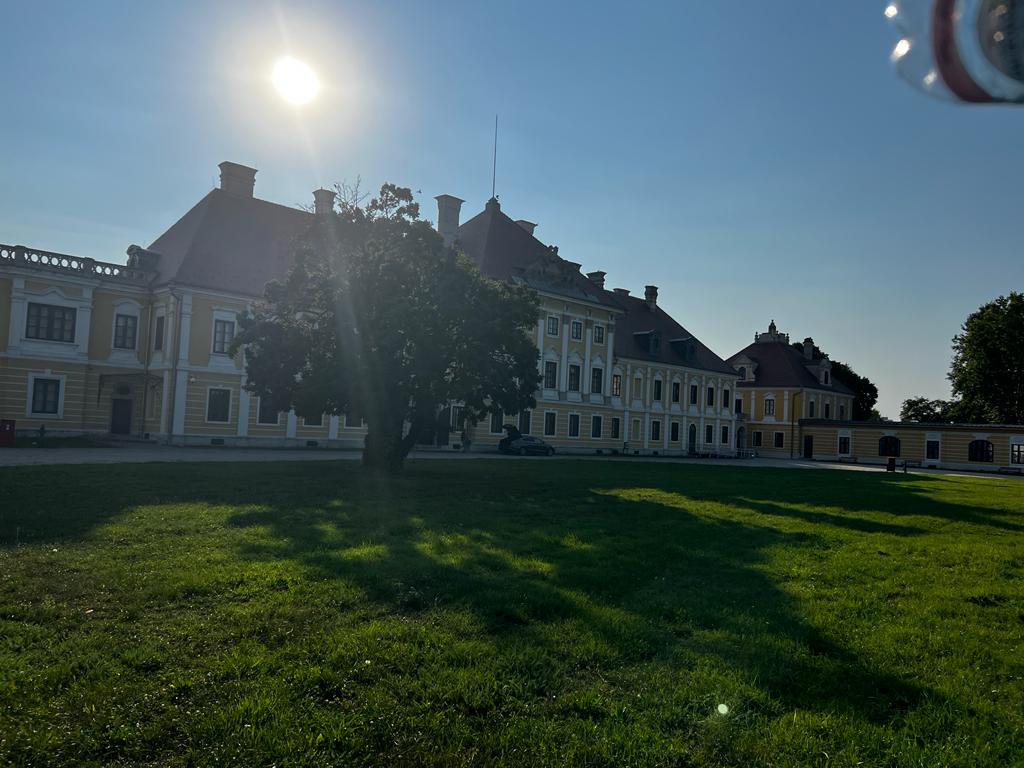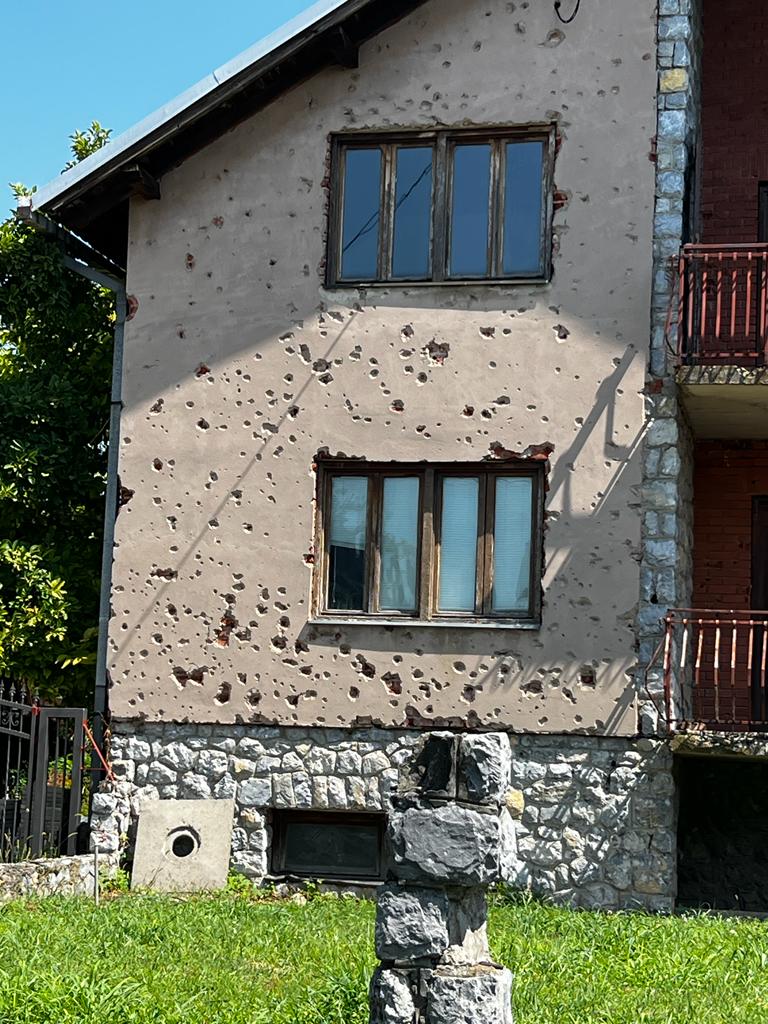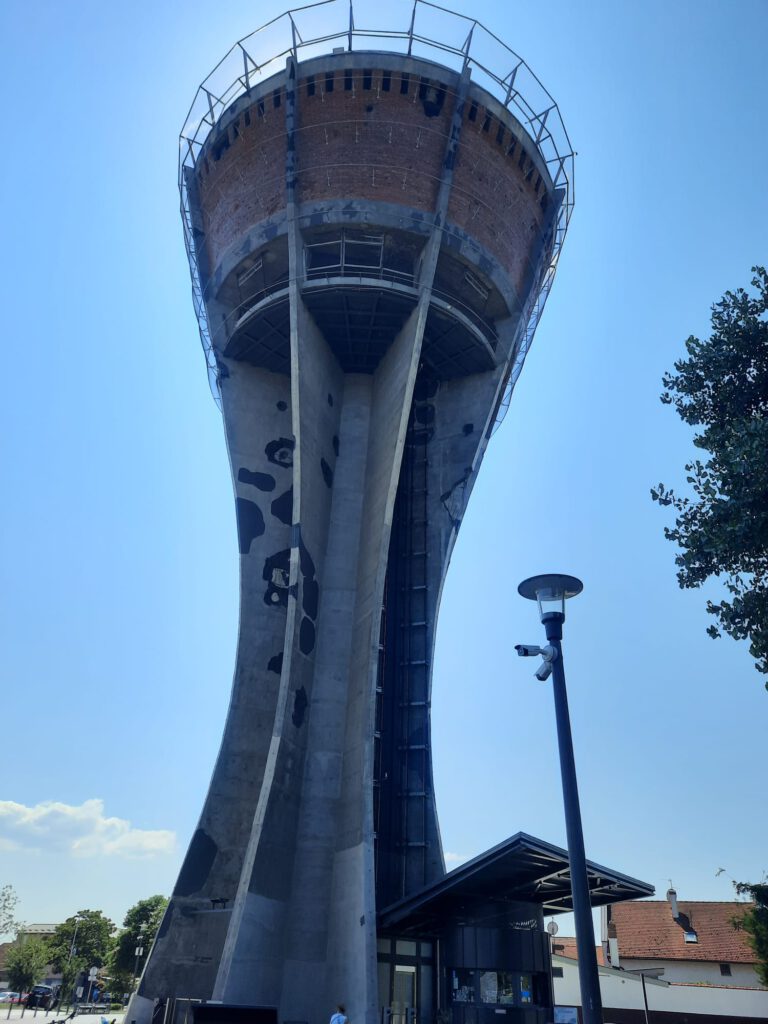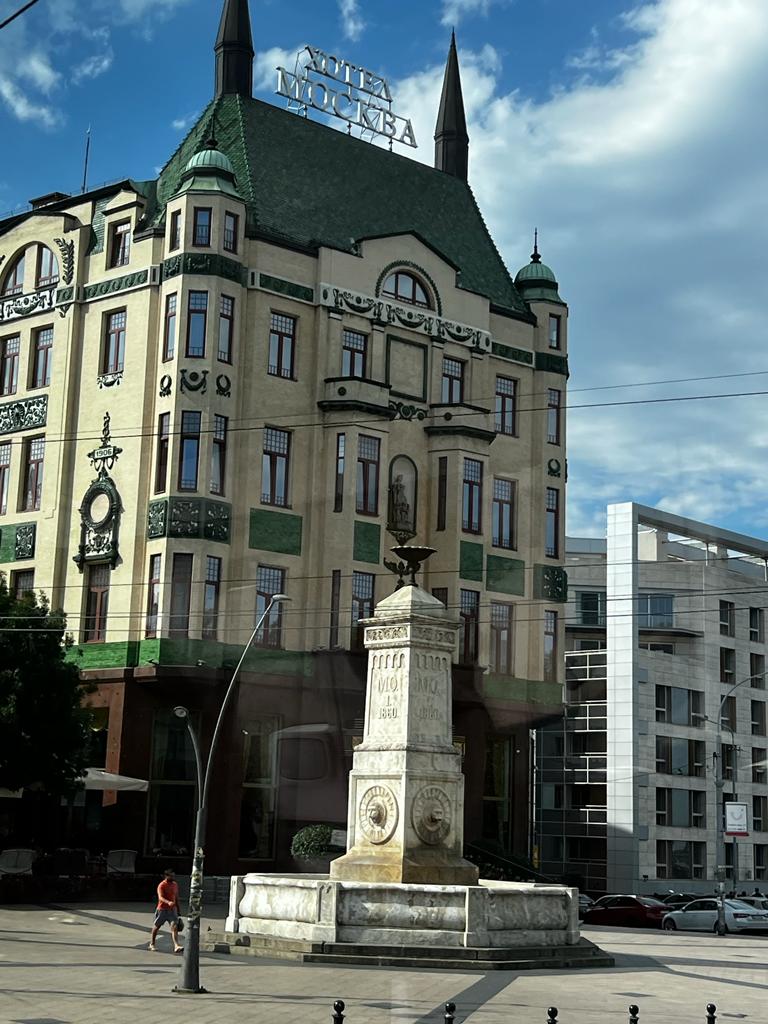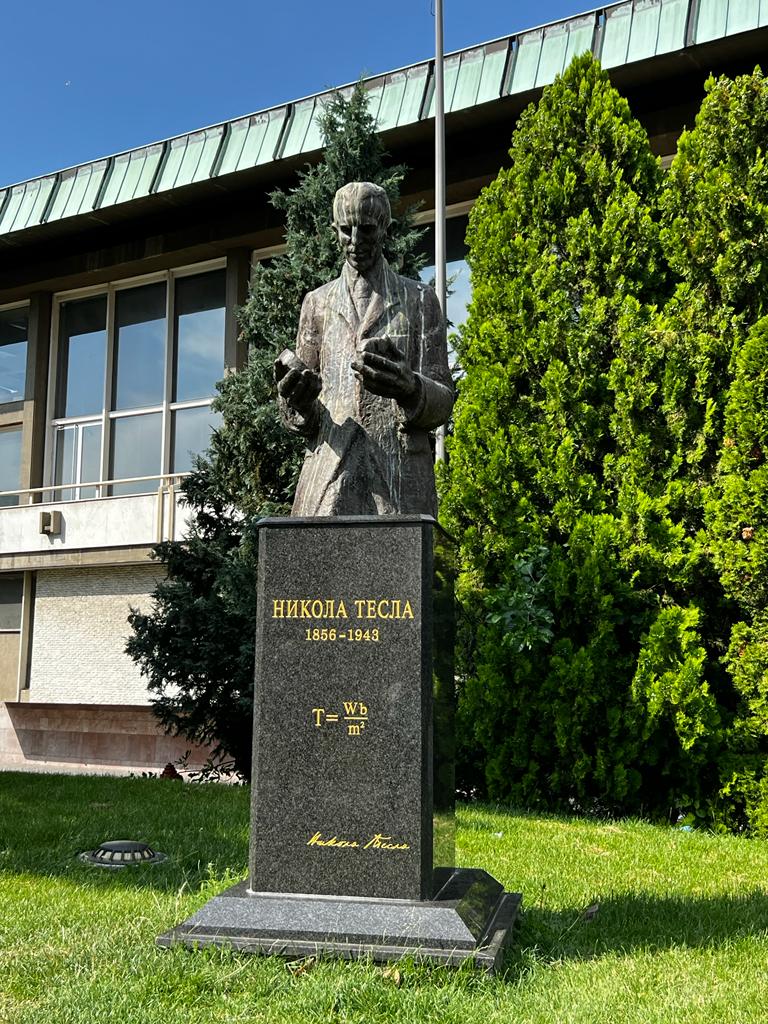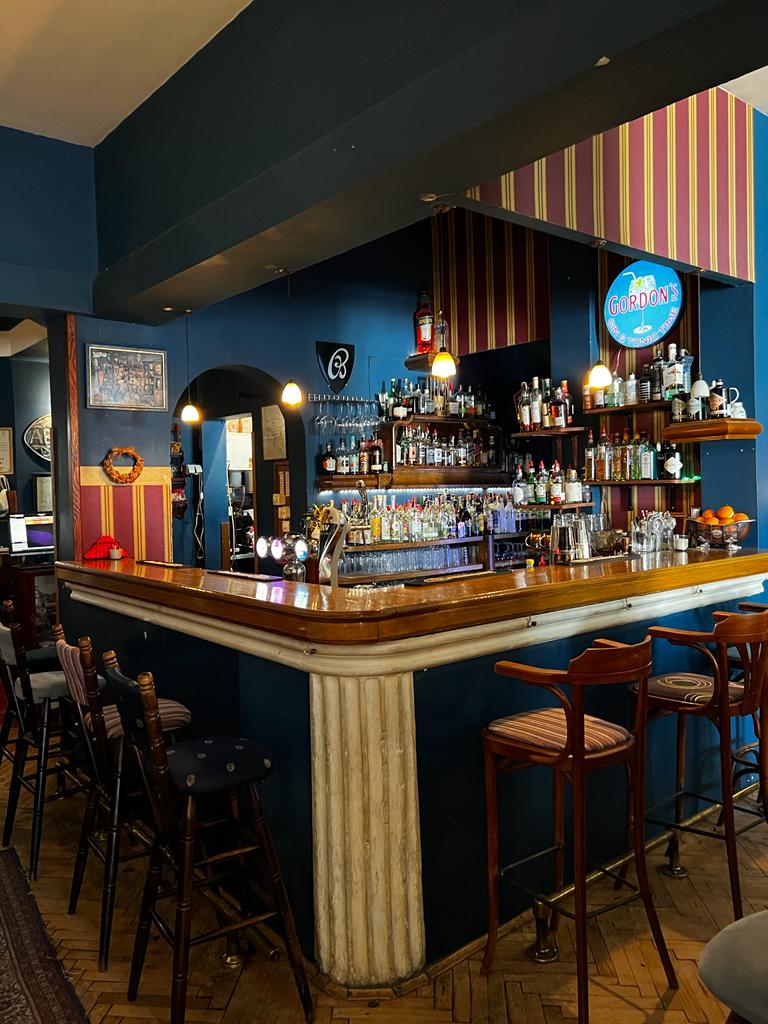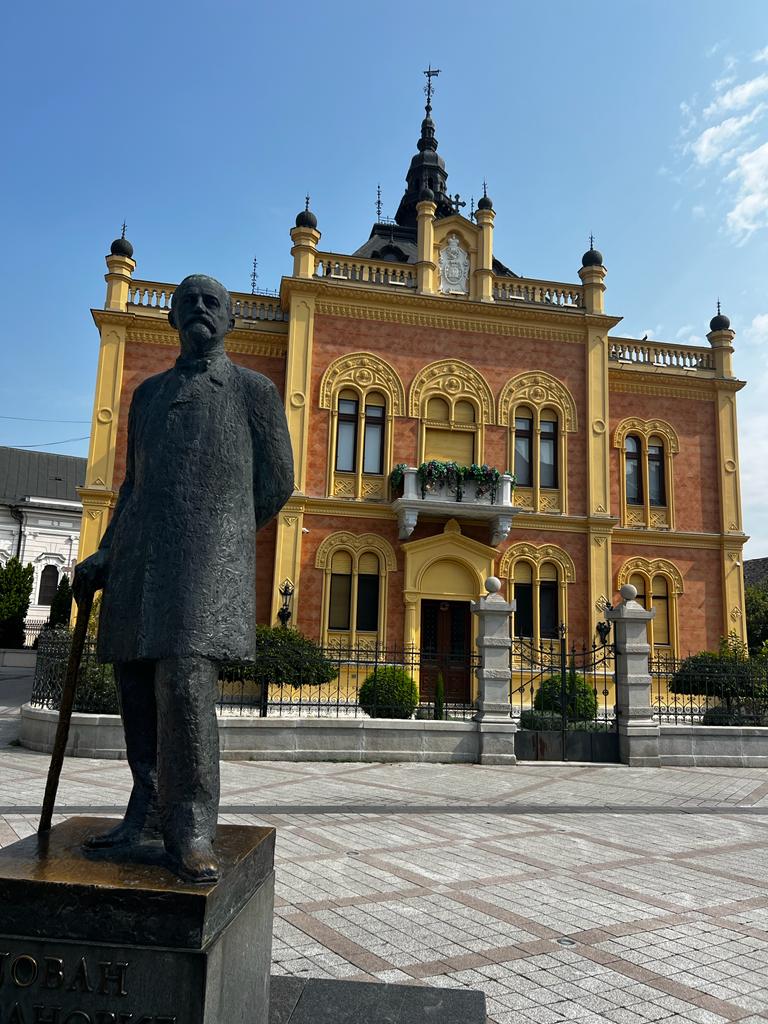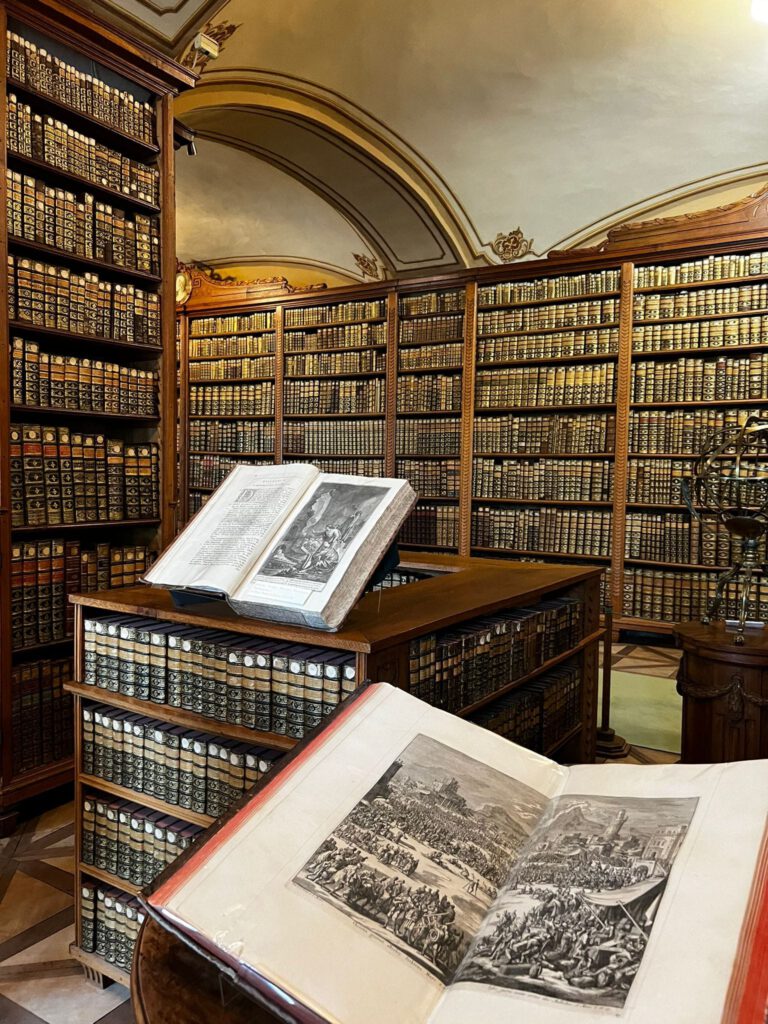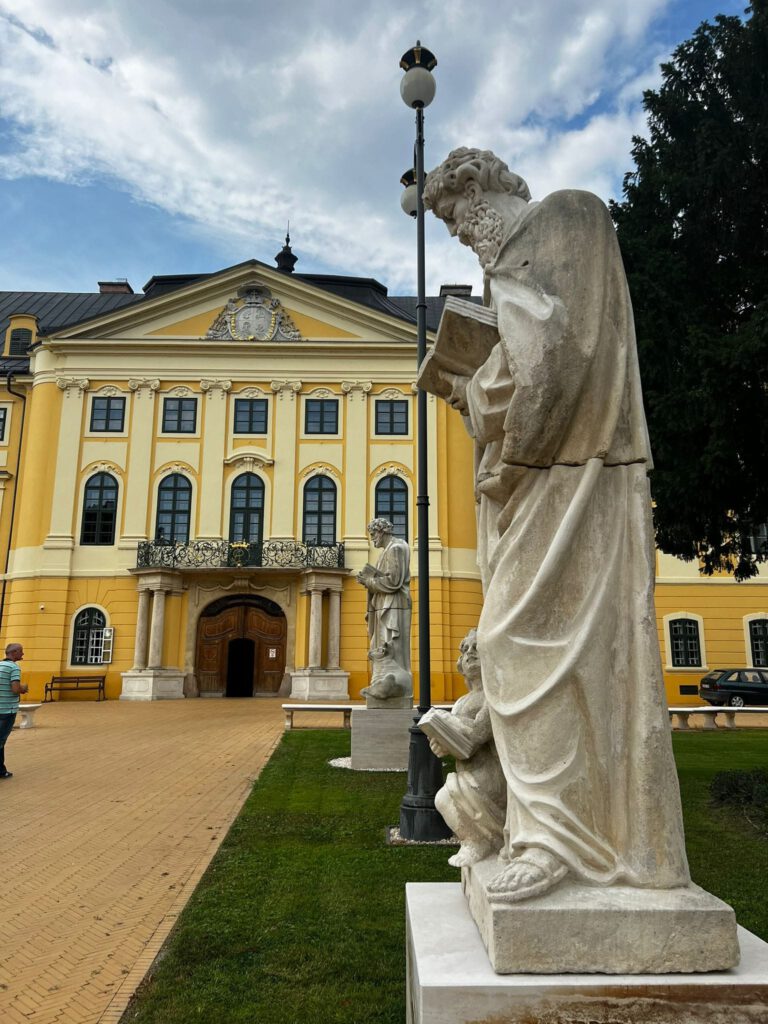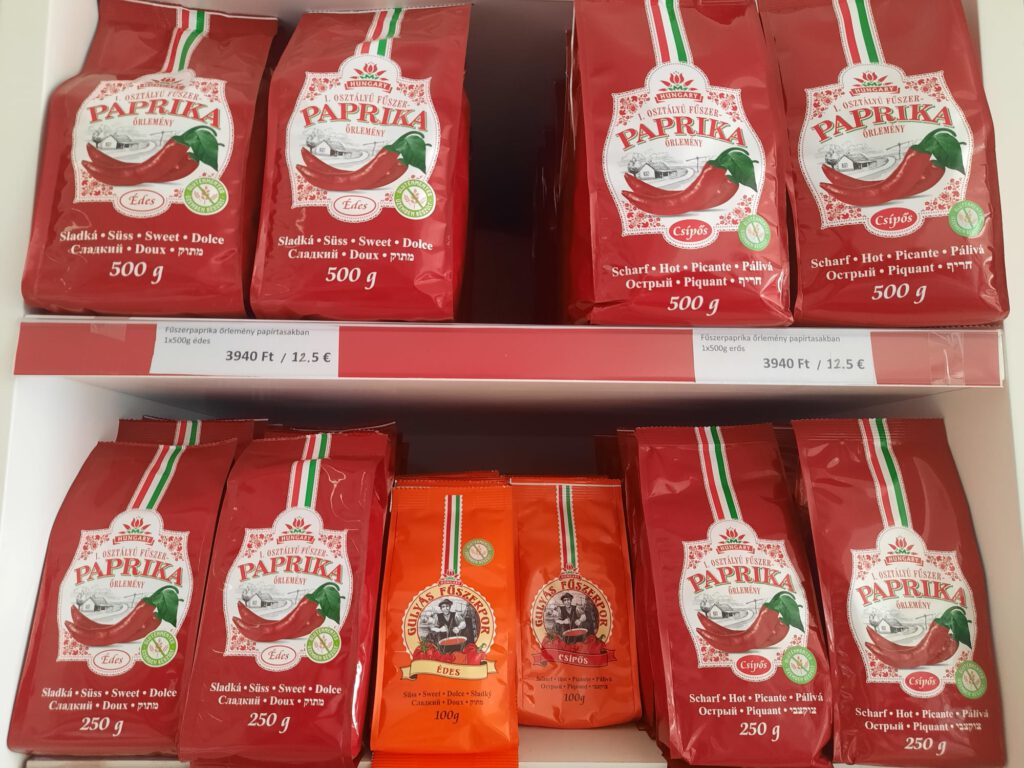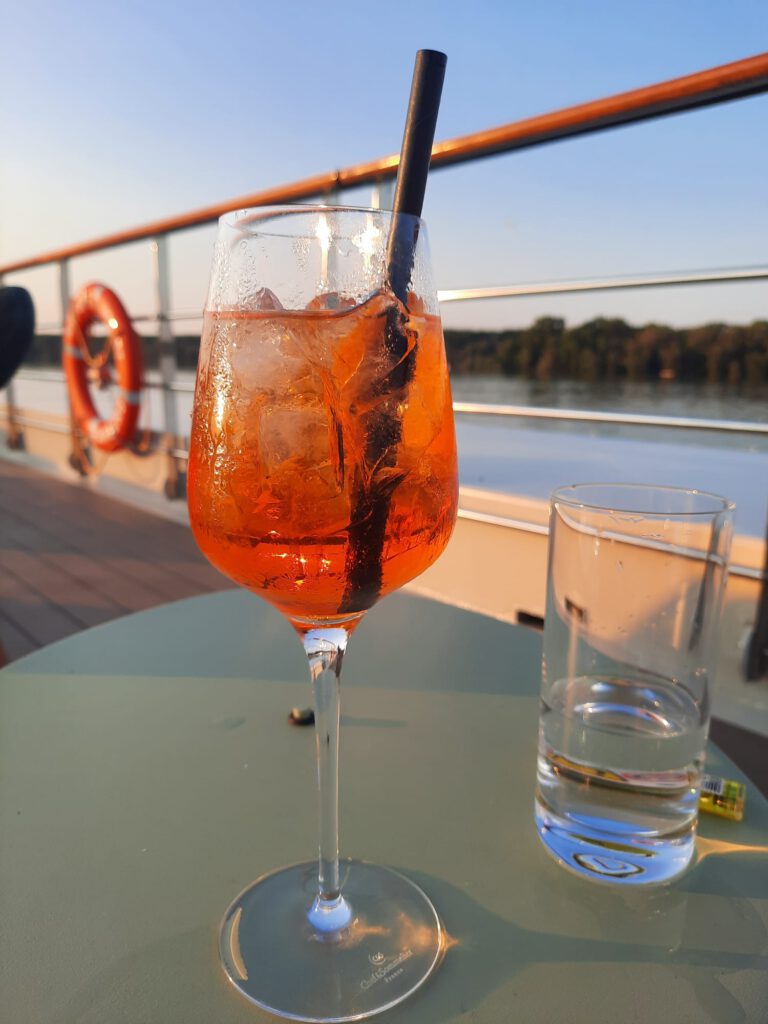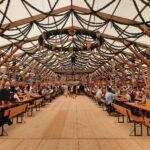
To the Oktoberfest in Munich
17. November 2023A stylish Balkan adventure on the water
The sky over Budapest is cloudless and the Danube shines jade green in the sun. On the quay on the Pest side, the river cruise ships are lined up, cruising on Europe’s second longest river, most of them between Passau and Budapest.
The Riverside Mozart is moored at quay number eight in front of the old warehouses converted into chic cafés and the glass „Walfisch“ event hall. The big difference to the other ships immediately catches the eye. At just under 23 metres wide, she is twice as wide as all the others. The sun deck is spacious with plenty of room for privacy. The modern, colourful lounge chairs are spaced far apart from the sun loungers and the Mediterranean flowerbeds smell of lavender, thyme or mint. The Mozart is a statement ship.
Days later, Captain Csaba Burjan (48) will say: „A normal river cruise ship is 11.40 metres wide, but the Mozart is 22.85 metres wide and 120.44 metres long. We have plenty of room“ and he will add: „A normal lock is 24 metres wide, we fit in. Only from Passau upstream all locks are too narrow for us.“
But there is not a single lock on my Danube cruise. I sail for a week from Budapest first to the southeast through the triangle of countries Hungary, Croatia, Serbia to the Romanian border at the Iron Gate, that mysterious, formerly highly dangerous Danube gorge. It is an impressive route across the Balkans with exciting cities like Belgrade or Novi Sad and with scenic attractions from the Pannonian lowlands to the green, towering Carpathian foothills.
I embark. Over a glass of champagne, hotel director Sonja Gruber welcomes me. The likeable Austrian has been the boss on the Mozart since 2016 and most of the 82-member crew has been on board with her since then. It’s a well-coordinated team that takes great pleasure in their work and offers guests first-class service and a culinary experience that is close to star cuisine.
- Hip Hip Chin Chin! The Mozart takes off
The Mozart has 82 cabins on its four decks for a maximum of 162 passengers, and that’s not even talking about cabins. They are spacious, luxuriously elegant suites. Cocktail chairs upholstered in dark blue velvet, soft sofas, comfortable king-size box-spring beds, attractive abstract paintings and black-and-white photographs on the walls, marble bathrooms with bathtubs, dressing rooms, a dimmable lighting concept, French balconies and the Harmony Suites on the lowest deck have extra-large windows – in short: the Mozart is as tastefully furnished as an urban five-star hotel with everything discerning travellers could wish for.
I check into a Riverside Suite on the second deck and Dilip – every suite has butler service – unpacks my suitcase and a week later packs it again. Blouses, blazers, silk dresses are hung in the wardrobes in the dressing room with professional care by the pleasantly reserved man. What luxury! I enjoy not having to worry about anything. While he stows my handbags in a drawer, I chat a little with Dilip, who speaks great British English, and learn that he comes from Rajasthan, India, and loves his job as a butler very much.
Afterwards, Dilip suggests a tour of the ship ¬¬- with pleasure. Right at the end of the corridor in the bow is the SPA area: a mosaic-tiled pool with counter-current system – it will be my favourite place to swim after getting up – then into the warm whirlpool, a Maldivian massage or in the late afternoon into the spacious fitness room, with a sauna or steam bath. Wonderful! Great plus points: Sauna and steam room are separated by gender and there is a hair salon!
On the third deck, everything revolves around culinary delights: in the stern is the maritime-inspired „Blue“ with portholes and a panoramic window onto the foaming water wave – perfect for a light lunch or a small delicacy in between. But the Bistro on the middle deck is also suitable for this, only here you feel more like you’re in a coffee house with Italian chic. Dolci, Aperol Spritz and a view of the Danube are also available, of course.
In the evening, the place to be is the elegant Waterside Restaurant: fine dining à la carte with a large wine selection – the sommelier is happy to help. At the heart of the Waterside is the enchantingly elegant Vintage Room: a long table for a maximum of twelve guests who can enjoy an exclusive dinner here on green velvet armchairs, bookable for special occasions. I was lucky enough to have hotel manager Sonja Gruber arrange the Captain’s Dinner in the Vintage Room.
The Vintage Room – a setting worthy of a film: Five waiters in white gloves serve a six-course menu plus an intermediate course and petit fours with coffee and digestif of choice in perfect unison under the strict gaze of the restaurant chef.
- The bar on the Mozart’s Vista Deck is a wonderful place at sunset
- The finest fabrics and noble materials: The suites offer plenty of space and are chic and luxuriously furnished
- Film-worthy scenery and the finest cuisine: The Vintage Room is perfect for an exclusive dinner for a special occasion
Would you like a little taste? Roast foie gras with brioche and port wine – we are in Hungary and the French are not the only ones famous for their foie gras – accompanied perfectly by a Taittinger champagne. It also goes well with the next amuse bouche: Malossol caviar with a touch of potato puree, crème fraîche and a shimmering gold leaf topping. The next appetiser: yuzu risotto with crayfish, then a scoop of sorbet to enjoy the main course with the trio of Hungarian Mangalitsa pork, very classic with dumplings and sauerkraut. Accompanied by velvety-dark red wine from the Spanish Ribera del Duero or Hungarian from the Danube? The wine connoisseurs discussed …
With the green Veltliner, the spinach ricotta cannelloni melts in your mouth before the sweet finale is served. How could it be otherwise – „Mozart’s joy“ is a nougat-pistachio ball wrapped in heavenly clouds (candy floss, gold leaf). It’s a menu removed from the ordinary, and the creative, always good-humoured mind behind it is chef Paula. The Romanian did her training in Spain, has been on the Mozart since 2016, since 2023 as executive chef and, after about two months on board, shuttles between Cadiz, Romania and Bordeaux, where her boyfriend lives, on her three- to four-week holidays – always on the lookout for new culinary inspiration.
My tip: Take a tour with Paula through the kitchen, which is particularly large and well-equipped for a river cruise ship – exciting!
Another Cohiba and a whiskey at the Connoisseur’s Club? Ernest Hemingway certainly wouldn’t have said no …
The smoking lounge with dark wooden blinds, incredibly cosy velvet and leather fauteuils and shimmering glass cabinets with fine bottles and noble cigar boxes looks just as if the writer had just left for Key West again. But before that, Hemingway would certainly have been spotted in the Cove Piano Bar. His favourite drink, a daiquiri called Papa Doble, is conjured up with ease by bartenders Peter and Mohet. The bar is a wonderful place on the Mozart to end the day with a drink after an exciting shore excursion or bike tour (the Mozart has regular bikes and e-bikes on board).
- Elegant club atmosphere: the Connoisseur’s Club smoking lounge
- The bottle green velvet armchairs and the stylish place settings – the Vintage Room is a classic beauty
- The well-tempered indoor pool is larger than expected and has a counter-current system
Hotel director Sonja Gruber shows the 60 square meter Mozart Suite.
We are casting off! So that we can experience the wonderful cityscape of Budapest in all its glory at sunset, Captain Csaba Burjan first sails a little way north to the end of Margaret Island, where he turns around.
Parliament, Freedom Bridge, the Gellert Hotel, high above the Castle Hill with the Fishermen’s Bastion, Chain Bridge … the picture-perfect city panorama passes us by twice at a leisurely pace while we enjoy a barbecue menu on deck. By dessert time it is dark, the last lights of Budapest are behind us and the Mozart sails swiftly downstream across the Danube, which shimmers like a broad black ribbon.
In the room, I push open the balcony door: Cool night air draws in, it’s super cosy under the down duvet in the king-size bed and the rhythmic slapping of water against the hull makes me fall asleep immediately. The wake-up call the next morning: a glowing red sunrise.
We are in the Croatian part of the Pannonian Plain: the landscape is flat, fields as far as the eye can see, the shore lined with trees, isolated almost white sandstone break-offs in the greenery and now and then a slender church tower with an „onion cap“ juts up into the blue sky. Around noon we reach Vukovar: the sight of the bombed water tower and the enchanting, baroque Eltz Castle could not be more contrasting. We go on an exciting excursion and several more in the following days … (more info see below Excursions and Cities).
Near Mohács in Hungary, the middle course of the Danube forms the border between Serbia and Croatia. Small islands lie in the Danube, now and then an oxbow branches off, it is sparsely populated and the beaches are busy. We get to know Serbia’s capital Belgrade, the enchanting Novi Sad and in Hungary’s small paprika capital Kalocsa we are surprised by a lot of spicy flavour and baroque church art in Italian style.
We leave from Budapest! During the barbecue on the Vista Deck, the fantastic city panorama passes us by as the sun sets
Everything changes overnight: the Danube bank is now overgrown like a jungle. Occasional herons sail over the surface of the water, anglers are on their way in narrow wooden barges, only a few houses stand on the water’s edge. First there are hills, then steep mountains – the Carpathian foothills. You wouldn’t be surprised if a family of bears appeared somewhere now, so wildly romantic is nature here.
We approach the Iron Gate, the spectacular Danube Gorge, where in 1972 the states of Romania and Serbia (or Yugoslavia) built a hydroelectric power station and a two-stage lock. The Mozart turns across the river just before it so that we can look at the huge structure that has made the Danube tamer. In earlier times, the gorge where the Danube makes its way through the Balkan and Carpathian mountains was very dangerous, almost unnavigable. Even today, rapids, eddies, rocky shoals and shifting sandbanks ensure the highest concentration for the captains. Csaba Burjan, who has alternately shared the captain’s bridge on the Mozart with his older brothers Bèla and Ferenc for over two decades, now also has a specialist for the lower Danube on board with Sàndor Hegedüs. „We rarely go to the Iron Gate, only once or twice a year. You have to keep an eye on the shifting sandbanks. But now it is very deep. We have 24 metres under the keel,“ explains Csaba Burjan. The two also keep an eye on the tree trunks and large branches floating on the water. The reason: the Mozart is built as a catamaran on the first eight bow metres, which is where the driftwood can get caught. But the advantage: the spa area has a large panoramic window as a result.
The stone face of King Decebalus, enthroned in the rock face high above the Danube on the Romanian side, has a disillusioned expression. No wonder: in 107, the king of Dacia committed suicide. He had been defeated by the Roman Emperor Trajan. The 55-metre-high stone sculpture, one of the highest in Europe and completed in 2004, commemorates him.
In contrast, nothing at all reminds us of the mysterious Ada Kaleh. The small island with Turkish inhabitants was a curious remnant of the Ottoman Empire and was flooded in 1971 by the backwater of the new hydroelectric power station and today lies metre-deep below the water level. „It’s a pity that this island, which looks so orientally inviting in old photos with its coffee houses, bazaar, hamam and mosque, no longer exists. Otherwise we could have moored here,“ Sonja Gruber regrets. But instead we are now driving close to the Tabula Traiana. The memorial plaque was erected under Emperor Trajan to commemorate the road that the Romans cut into the rocks here. It, too, lies metres deep in the water.
Then it’s a case of waiting. The Kazan Narrows is a one-way waterway because it is so narrow, and only when a freighter has passed it does the Mozart slowly glide into one of the narrowest parts of the Danube. „For nine kilometres it is only 152 metres wide,“ says the captain, and to the right and left the Carpathian rocks rise steeply. In the middle of the Kazan Narrows is the Serbian-Romanian state border, but we almost feel like we’re in a Norwegian fjord. I am so impressed that I enthusiastically wave to the people on the small motor boats – something I usually do rather rarely.
Back in Budapest, I have 1400 kilometres of river cruising behind me on the Riverside Mozart – every kilometre pure enjoyment on an exceptionally beautiful ship.
- The Riverside Mozart sails on the Danube past the Iron Gates and the steep Carpathian foothills on the border with Romania
- Lying in the sun on the Vista Deck while the Mozart sets course for the Kazan Enge, one of the narrowest parts of the Danube – a holiday dream
Excursions and cities
Before embarkation, each guest receives the Riverside Mozart’s excursion offer, which changes according to the season. There are several options for each city, which can be selected according to personal interest. The guests of the Riverside Mozart are international, so there are different language guides available for the guided tours. Events are also held on board, such as kitchen tours, wine tastings, cooking or mixology courses, folklore and music evenings …
Budapest
My tip: a cruise with a stop in Budapest on 20 August. This is when Hungary celebrates Saint Stephen and you can enjoy a fantastic view on board of the fireworks, some of which are set off on the Danube, and the Mozart crew serve a dream dinner on the Vista Deck – a once-in-a-lifetime experience!
I took a trip to the Castle District on the Buda side – in 1873 the Buda and Pest districts, separated by the Danube, were united. The very good German-speaking guide, Melinda Ravasz, gave a detailed account of Hungary’s long history and of Budapest.
I was in Budapest in the early 1990s. At that time, the facades of the former „Paris of the East“ were dreary grey-black, but today it is a beautiful metropolis, as beautiful as Vienna. The Castle District, a UNESCO World Heritage Site, with the Fishermen’s Bastion built for the 1896 World Exhibition and the extraordinary Matthias Church, is definitely worth a visit, even if it is very touristy. You should also take a look at the Matthias Church. Originally a Romanesque-Gothic church building, it has been „resurrected“ again and again after various destructions over the centuries and today looks almost brand new. Emperor Franz Josef and Sisi fans do not miss the royal oratory. The Hungarian imperial couple was crowned in 1867 in the Matthias Church, which partly looks like a castle with its romantic-historic interior design.
Anyone who walks through the castle district afterwards will be amazed. Hungary’s government is having dozens of old magnificent buildings rebuilt as part of the National Hauszmann Programme, such as the Palace of Archduke Joseph and the building of the High Command of the Hungarian Armed Forces. The prime minister also resides in a monastery building on Castle Hill that has been renovated at a cost of millions.
You can also stroll through Budapest on your own or cycle through the city on one of the bicycles.
My tips are mainly on the Pest side:
From Heroes‘ Square via the magnificent boulevard, Andrassy Street (UNESCO World Heritage Site) past the Opera, one of the most beautiful stages in Europe, among others, to the grandiose Parliament Building and along the Danube back to Mozart. On the way, visit one of the famous coffee houses such as the New York Café (Belle Époque splendour, but very crowded, Instagram hotspot) and/or a bit further on the contrast programme: have a drink in one of the original ruin pubs such as Szimpla Kert.
Riding the number two tram – a panoramic ride.
Visit one of the legendary thermal baths, e.g. at the Gellért Hotel or the Széchenyi.
Visit the market hall only five minutes‘ walk from the ship – a gourmand’s paradise purely with Hungarian specialities (foie gras, paprika, salami, caviar …)
- The 268 meter long Parliament is one of Budapest’s landmarks, a magnificent building in the neo-Gothic style
Vukovar / eastern tip of Croatia, eastern Slavonia
The small town in the Pannonian Plain must have been a flourishing place during the Austro-Hungarian Monarchy. You can get a glimpse of it in Franz-Josef-Gasse with its now empty grand hotel. The castle of the Counts Eltz does the rest. The Elector of Mainz von Eltz bought an estate here in 1736 and had it converted into a Baroque castle. Today, it houses the town museum, which is well worth a visit, with its fascinating history of the castle, among other things. You can also follow in the footsteps of the Danube Swabians, who started a new life here through a targeted settlement policy, e.g. under Empress Maria-Theresia. But you can also follow in the footsteps of Bata shoes. The Czech entrepreneur founded a rubber and shoe factory in Vukovar in 1931 (Borovo).
During the Croatian war from 1991 to 1995, one of the most terrible battles took place in Vukovar in May 1991 and it was almost completely destroyed during the Serbian siege. The water tower, still bombed to this day and widely visible from the Danube, remained standing as a memorial. Some of the residential buildings are still covered with bullet holes.
My tip: Book the excursion, you will learn a lot and enjoy a private piano concert at Eltz Castle or simply cycle off.
- Fortunately, Eltz Castle in Vukovar was rebuilt after the war. The Counts of Eltz have their ancestral home at Eltz Castle in northern Rhineland-Palatinate, which is considered Germany’s fairytale castle
- The Vuka flows into the Danube
- Anyone who cycles through Vukovar’s residential area will see many houses that have been destroyed since the Croatian War (1991-1995).
- The Vukovar water tower with its 640 bullet holes from the Croatian War stands here today as a memorial
Belgrade – Serbia’s capital
Belgrade is on the Sava River and the Mozart has to sail about a kilometre from the Danube along the river to the mooring quay below the fortress. I had no idea of Belgrade so I booked the city tour. Goran B. Rajkovic guided us through the old town. It’s rare that a guide knows so much and is so entertaining, so definitely recommendable.
Bright red, old buses powered by electricity rumble through the city. The metropolis of 1.7 million inhabitants has neither suburban nor underground trains. It is written in Cyrillic. The city has a long history, and today a „friendly democracy“ prevails. The street names have changed umpteen times – to suit the respective rulers. You drive or walk along enormous boulevards like the long pedestrian zone past magnificent buildings, not always beautifully renovated, and those on foot should keep an eye out for potholes and loose paving slabs.
Yugoslavia nostalgics make a pilgrimage to the Tito Museum, Tesla fans to the Nikola Tesla Museum, and church fans are left drooling at the sight of the Serbian Orthodox Church of St. Sava, now almost completed after decades. 38 domes, 72 metres high, 49 bells, clad in snow-white marble – a similarly massive, monumental building as the Hagia Sophia in Istanbul, only brand new.
Istanbul is now only 1000 kilometres away and the motorway is the shortest route between Europe and the Middle East. And what does the Church of Saint Sava look like from the inside? 15 million mosaic stones covered with gold leaf create a gigantic, sparkling interior. „The church has been financed by donations for decades. Exiled Serbs have sent money every year,“ says Goran B. Rajkovic.
Back on the Sava, the many clubs in the floating pontoons on the shore and the restaurants on the quay are awakening towards evening. But we cast off and sail overnight to the Iron Gate.
- Red buses with overhead lines drive through Belgrade. Serbia’s metropolis has neither subway nor S-Bahn
- An enormous domed building: the Church of Saint Sava
- The Church of Saint Sava is equipped with millions of gold-plated mosaics
- Belle Époque and Art Nouveau buildings line Belgrade’s streets
- The monument commemorates Nikola Tesla (1856-1943). He is the namesake of the Tesla electric cars
- There are picturesque restaurants along the Sava where you can try Serbian cuisine
Novi Sad
Serbia’s second largest city is the capital of the province of Vojvodina. The Mozart is moored on the left bank of the Danube right in front of the city centre and opposite the Petrovaradin Fortress, which is said to be worth a visit in the evening with its small bars in the former barracks.
Only a few minutes‘ walk from the Mozart and you are in the lively centre of Novi Sad. Beautifully renovated burghers‘ houses from the 18th and 19th centuries painted in bright colours, secluded squares, a large fruit and vegetable market, an attractive pedestrian zone, nice cafés and churches of various denominations: The Habsburg heritage is undeniable here – Novi Sad’s heart is magical, serene, quite different from Belgrade.
My tip: You can explore the city on your own.
- On Freedom Square in Novi Sad you can see the Church of the Name of Mary from the town hall
- The narrow cobbled streets in the center are lined with bars
- Novi Sad’s coffee houses have a nostalgic charm
- The Vladicanski Dvor Bishop’s Palace is one of the most beautiful buildings in the city
Kalocsa in the south of Hungary
The Danube is about four kilometres away from Hungary’s paprika capital, which is said to have the world’s largest cultivation area for spice and vegetable paprika. Too bad, I didn’t see a single paprika field, but I did visit the pretty paprika museum in the centre. The local guide and German teacher Gabor Szauter does a good job. From him we hear that 1200 tonnes of spicy peppers are produced here a year – hanging in dried garlands everywhere. A Hungarian family uses four kilos of paprika powder – sweet or hot – a year to season goulash and the like. I didn’t ask about the amount of onion and garlic, but it must be quite a lot …
And as is so often the case, Napoleon’s Continental Blockade played a role: pepper from India no longer arrived in Europe and the spicy-tasty substitute was the red vegetable imported from South America. 90 percent of the peppers are harvested laboriously by hand, today on 1000 hectares of cultivated land. In the 1980s, it was 3000 hectares. The business is declining, and it is difficult to find harvest workers.
Maybe little Kalocsa will get on the UNESCO World Heritage List in the next few years, but not because of the paprika. To understand this, you have to enter the Cathedral Square – a real surprise. In the classic Schönbrunn yellow – Emperor Maria-Theresa’s favourite colour – not only the baroque cathedral with a towering double-tower façade shines, but also the archiepiscopal palace with a valuable library opposite, and Franz Liszt, who often played the organ here, gazes at the beautiful square from the monument, inspired.
And now it’s coming: During excavation work under the cathedral, not only 1000-year-old remains of the previous building were found, but also a corpse. It was probably the first archbishop of Kalocsa, a man named Astrik, who took office here in 1006, Gabor Szauter tells us. This Astrik is considered to be the most important ecclesiastical collaborator of Saint Stephen, who is said to have founded the Kingdom of Hungary with the help of Astrik. Stephen’s memorial day is 20 August, Hungary’s bank holidays.
In the farmer's museum, women show the elaborate handwork of typical Hungarian lace
- Cheers to a fantastically beautiful Danube cruise on the Riverside Mozart
Fotocredit: Riverside Luxury Cruises (Werner Beyer (1), Brechenmacher-Baumann (2), Adfecto LLP (1)), Petra Kirsch (Fotos und Videos).
Meine Teilnahme an der Pressereise im August 2023 fand auf Einladung von Riverside Cruises satt.
My participation at the press trip in August 2023 took place at the invitation of Riverside Cruises.


